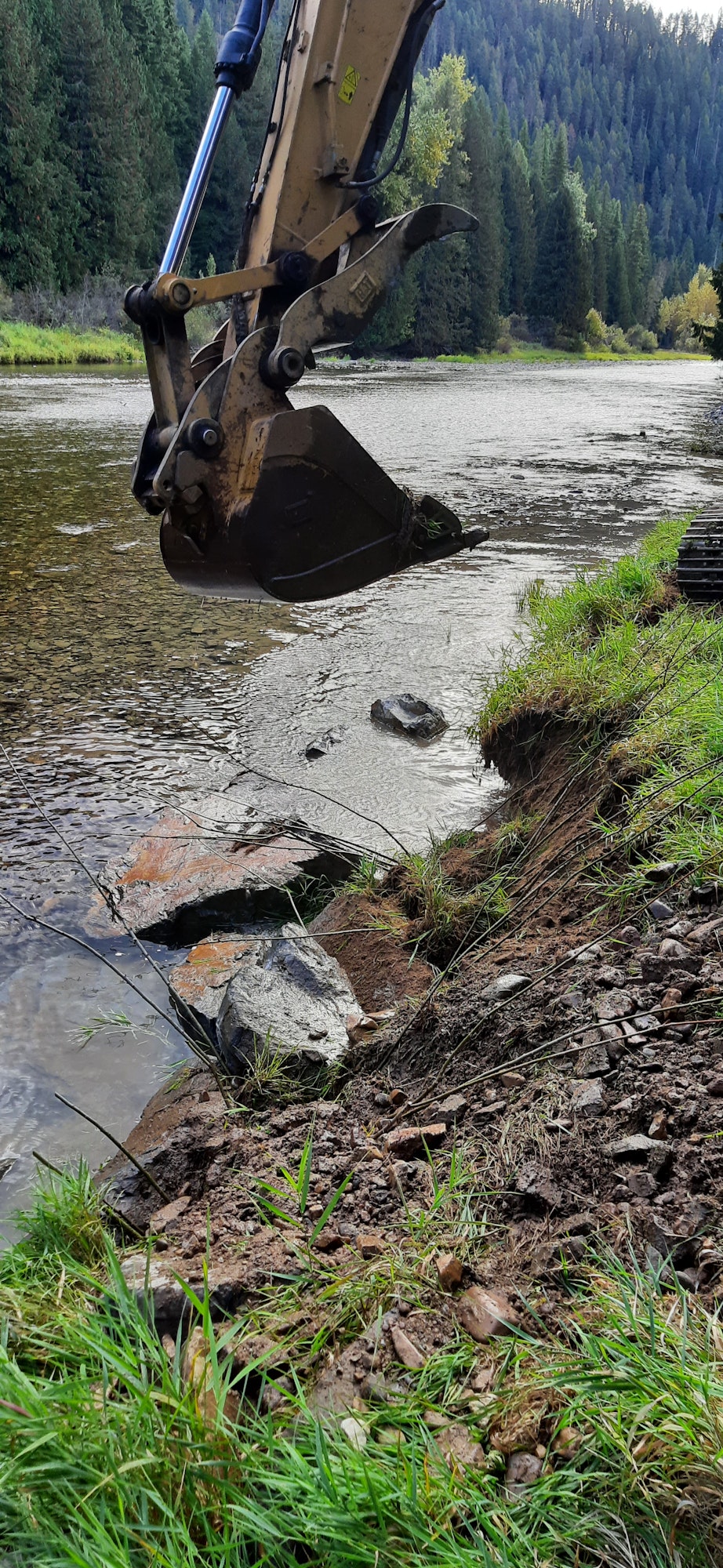North Fork Coeur d'Alene River Streambank Stabilization Projects
We have completed several streambank stabilization projects on the North Fork Coeur d'Alene River. Through cost-share grant programs funded by the Idaho Department of Environmental Quality (IDEQ), we can partner with voluntary landowners to implement conservation projects that protect soil health and water quality. Project sites on the Coeur d'Alene River were identified due to bank instability and a lack of shade cover from native vegetation. These concerns were causing significant erosion, nutrient loss, high stream temperatures, and a reduction in critical riparian habitat.
Project work and engineering is decided on a site-by-site basis. In this watershed, we have utilized bioengineering techniques such as vegetated riprap and bank barbs. The establishment of native plants on the streambank is critical to the success of the project. Plants can reduce erosion, catch sediment, and provide shade and habitat for riparian species. We will only use native plants such as willows and dogwood. Willows are one of the most resilient plants in this ecosystem because they can establish and grow between rocks. However, plants alone aren’t always sufficient. To effectively reduce erosion, structural practices such as large rock are often necessary if the river is posing an imminent threat to highways or homes. We will typically employ some variation of vegetated riprap, utilizing angular rock and dormant cuttings of willows, to effectively stabilize the streambank. We have also diverted flow away from an eroding bank by installing bank barbs. Barbs do a great job of reducing water velocity near the bank and intercepting upstream sediment.














